
My family went over spring break to the Sevierville area. We stayed in a nice cabin with wonderful views of the mountains in a very secluded hamlet. I went on two hikes. One was through a little river, and then we went into an almost tropical environment. We walked through some beautiful wildflowers and stopped at a picturesque waterfall at the end. The other hike we went on was the Alum Cave/Mt. LeConte Trail, and it was the most beautiful trail I have ever seen. The first mile you are traversing through a river, and then you go through an arch rock natural formation that is pretty cool. Then you start going up a little bit, and there is a beautiful corner that you can climb on and see the view below. Once you reach Alum Cave, you realize it is more of an overhang, but still really nice. Then, after that, you start heading up. The terrain gets steeper, and the trail is rocky. But it is no doubt amazing views. This is the part where it is just astonishing. You are so high up, and when it is cloudy, you are mesmerized. The last part of the hike is my favorite, and you go through a spectacular pine forest that just gobbles you up. At the top, there is a lodge with a staff and some cabins. The staff was nice and the accommodation was excellent. I couldn't recommend this hike enough, it is top tier and the …
Keep reading 0 comments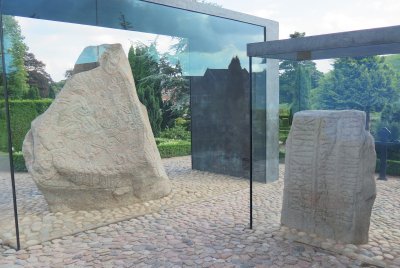
I visited this site back in September 2017 (compare the picture Frederik Dawson posted and mine you'll see it's exactly the same as five years before. I think it will always look like this although the glass covers might change). In 2017 the museum was new, I think, and it's DEFINITELY worth a visit for more than just the Jelling stones but overall Viking info. You can even go into Valhalla - I mean, literally? Jelling is a must visit but why the low score from me and from most visitors? Well, it's important - but not worth seeing the stones themselves. In fact the picture of a stone would probably be enough anyway. You have to stand in front of it and think "oh, wow, so this was planted here and that's why there are Christians in Denmark afterwards". Are you going to do that? Well, unlikely. I have stood in front of "The Birth of Venus" in Florence for over thirty minutes too - and I could have done that in front of a fake picture, in front of my tablet - but it didn't feel the same. Same goes for maybe Jelling but I definitely didn't stand here for thirty minutes.
You get to the see the rocks, the church, and several ship burials. Whereas you cannot do much apart from climbing the hill that contains the ship (I wonder if it was ever unearthed or not touched out of respect) you definitely want to spend …
Keep reading 0 comments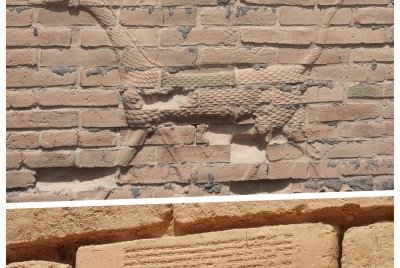
I made it to Babylon in April 2025. There’s a lot to explain here – we’re missing a Solivagant-style PhD review, so I have tried my best to cover a few subjects to better be able to understand this WHS. I based myself on the official nomination documents, web searches, and the wonderful book “Mesopotamia, Ancient Art and Architecture”.
First, the Babylonian Empire itself. We had a connection here already. I’ve redone it to distinguish between the “Old” or “First” Babylonian Empire and the Neo-Babylonian Empire. Remains of the first (2nd millennium BCE) are hardly existent at the Babylon WHS. It focuses on the Neo-Babylonian empire, about 1,000 years younger and a relatively late stage in the history of Mesopotamia overall (it is Chapter 12 of 14 in the aforementioned, chronologically ordered book). The King of Babylon (most notably Nebuchadnezzar II) regained regional power and started a monumental building scheme that centered on his capital, Babylon and included the famous Ishtar Gate. This Babylon is also what is referred to multiple times in the Bible (often allegorically and not in a positive way).
Second, the site’s integrity and authenticity. It is estimated that only 18% of the archaeological remains of Babylon have been excavated. Still, you will see a lot of semi-complete buildings at the site. This is the result of the “Revival of Babylon Project” that ran in the 1980s. Saddam Hussain saw himself as a modern Nebuchadnezzar (this was during the Iran-Iraq …
Keep reading 0 comments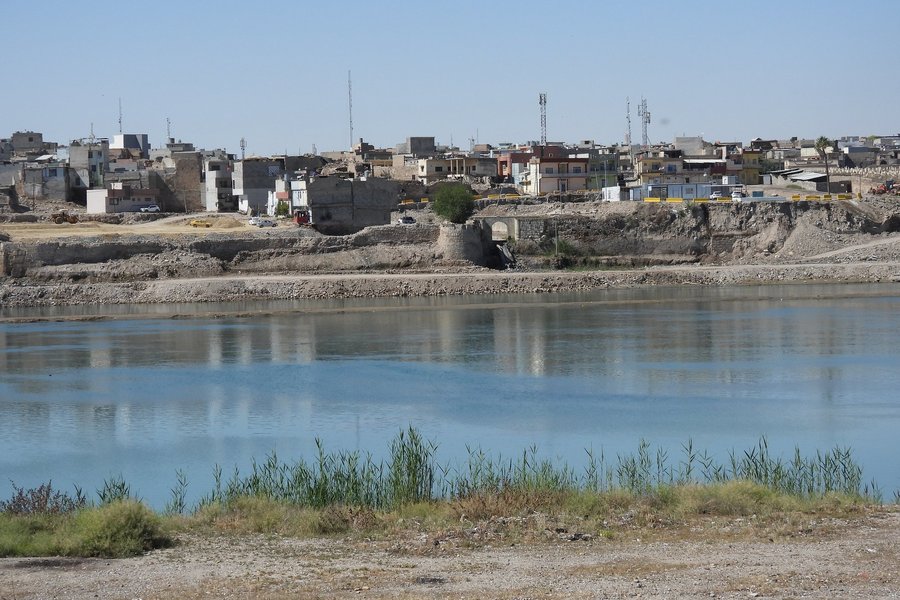
The northern city of Mosul is the odd one out among the Iraqi (T)WHS. On the one hand, it is probably the one most severely damaged during the recent conflicts (though nearby Nimrud has been hit hard as well). On the other hand, it is the only one that has been subject to a full-scale international rescue mission, which has also brought in internationally accepted restoration and conservation standards.
The Old City of Mosul stands for a thus far unrepresented part of Iraqi history: that of the Turkic-Mongol invasions (though a nomination will also include its Ottoman remains). The Turkic Zengid Dynasty ruled the area of northern Iraq and Syria from Mosul from 1127–1222. The city, located along the major trade routes of the time, was known for its metal craftsmanship and miniature painting. The main monument left from this period is/was the Al-Nouri mosque and its leaning minaret.
Unfortunately, it was exactly this mosque that was blown up by ISIS during their retreat from Mosul. Their black flag had been flying from the minaret since Abu Bakr al-Baghdadi claimed the Caliphate from here in 2014. After losing the Battle of Mosul in April 2017, they blew it up with explosives in a “final act of angry defiance”.
The first impression of the Old Town in April 2025 is still one of devastation. The area along the West Bank of the Tigris is in total ruins and part of it has already been bulldozed. The narrow alleyways of the Old …
Keep reading 0 comments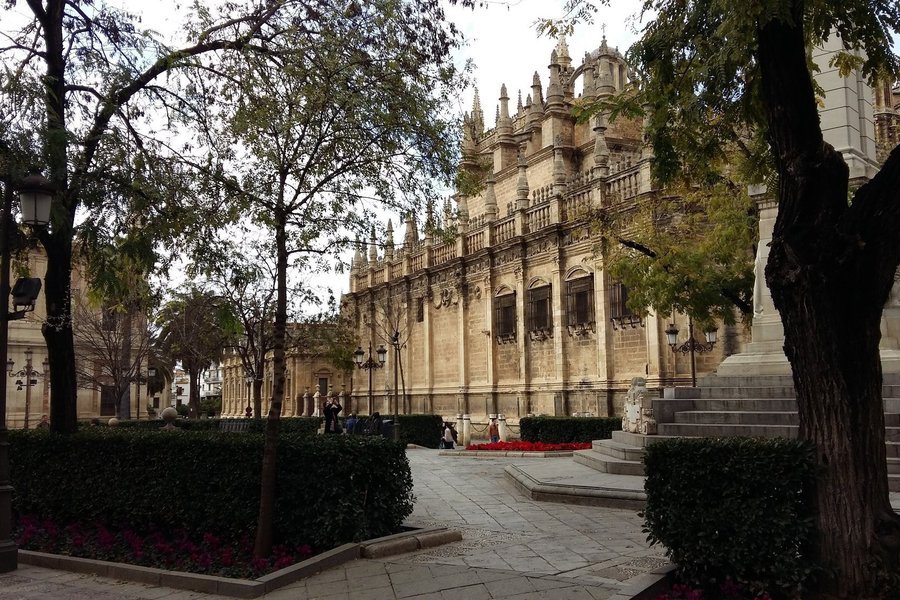
I visited this world heritage site on March of 2025. Well technically I had already been, but it was so long ago I barely had memories about it and I crucially didn't go to the alcazar.
So after reading extensively about Islamic architecture I decided it was time to re-visit the city.
The world heritage site itself is a bit weird. It comprises three buildings built in different time periods for very distinct reasons. Their main point of connection is that they're right in front of each other.
The archive of indias is a rather nice stopover. There's actually not much to see, just a rather fine 16th century Renaissance building with some delicatelt sculpted ceilings. It used to be the "lonja" of Seville. What's actually renowned is what's inside. Almost all information related to the spanish colonies is stored in this archive. It was moved here in the 18th century from several other archives in the kingdom. Nowadays you can see some rather important documents in the visit, like the ones related to the first circumnavigation of the globe. I personaly fail to see the OUV of this building. The documents themselves are amazing but they do not count and the building itself, though a shining example of Spanish Renaissance is not truly outstanding. It left me questioning how exactly did it get in the list.
The cathedral of Seville is above all renknowned for two things: it's huge bell tower (La giralda) and it's …
Keep reading 0 comments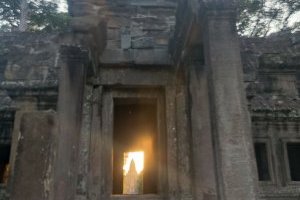
Time of the visit of Siam Reap: 26.03.-5.04.2025
As soon as I arrived in Siam Reap I bought a 7-day pass( You have 1 month to use up the 7 days) for the unesco complex of Angkor Wat and went immediately to the temple Angkor Wat where I spent around 3h till sunset.It was a very hot day and the temple was totally overcrowded with visitors from all parts of our planet.The next two following days I visited the unesco sites Preah Vihear near the Thai border as well as Koh Ker. I also visited the Angkor National Museum (strongly recommended as it helps you to understand quite a few things better when out in the Angkor Wat Complex),the war museum and the cultural village ( a kind of surreal cambodian disneyland,quite big) in Siam Reap. I carefully planned the next six days to divide the massive temple complex into six manageable sections. The temperatures were high—always over 35 degrees Celsius. It was impossible to spend every day in the temple complex from morning until sunset.I used various transport options: one day I rented a bicycle, another day a tuk-tuk for almost a whole day (60,000 riel, the standard is 80,000, anything above that is a rip-off). Mostly, though, I used the very useful and excellent app "Pass Up Cambodia," a kind of Uber for tuk-tuks and motorized rickshaws(they are around 10-15% cheaper than tuktuks and have a roof). My 7 days were the following:
1. Angkor Wat …
Keep reading 0 comments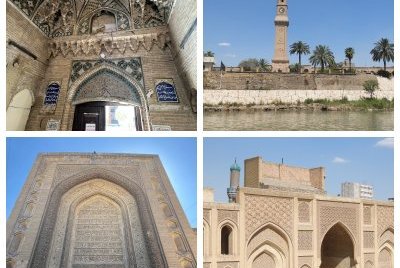
Behind this long site name hides what could be called “Old Baghdad”, the area from which the Abassid Caliphate (762–1258) ruled and where the Ottomans later had their headquarters as well. It is closely tied to its position on the eastern river bank of the Tigris, and the Tentative Description also proposes it as a City of the River, like Paris and Budapest. Baghdad nowadays markets itself as the ‘Capital of Arab Tourism 2025,’ and this is a focus area in the city for tourists. The area has been in a rehabilitation process since 2017 (it had been neglected and damaged in the decades before) and is bustling again. There have been reports about a possible lack of adherence to scientific archaeological standards in the restorations. Still, to me, it felt quite tastefully done (at least more restrained than at other monuments handled during Saddam’s times).
We approached it on foot, crossing the bridge, from where you already have a panoramic view of the area with some tiled minarets and domes standing out. It’s also the location of the old Souk, part of it still in a covered market hall. They sell school supplies, a few souvenirs, there is a Book Street and the famed ‘intellectual’ Shabandar Café, plus a separate Copper Market with craftsmen that have been working there for generations.
The tentative site focuses on the monumental buildings in the area. The first one we entered was Al-Qishleh, a former Ottoman military headquarters. It’s a …
Keep reading 0 comments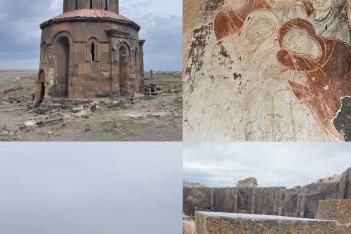
I visited Ani in April 2025 so I thought I would give an update on the site now :)
Getting to Ani was very easy. There is a small bus that will take tourists to the site everyday at 9am starting at Gazi Ahmet Muhtar Paşa Konağı. The shuttle stays at Ani until 12:45, when it departs back to the same location. Here is the site that lists the updated minibus times, in case they change in the future. The drive is about 50 minutes, and you can pay with credit card or cash -- 100 tl per person. I found the ~2.5 hours at the site more than enough to explore everything and take in the beauty of the natural landscape. Ani accepts MuzeKart if you have it; otherwise, the foreigner price is 8 euros.
While at Ani, there are signs for most of the sites in Turkish and English that briefly explain the structures. However, the signs are brief and left me wanting more; I used the website "virtual ani" to read about the history, excavation, and purpose of each building. The Ani cathedral, for some the star of the show, is currently under some construction so you cannot enter it. The farthest I walked was maybe about an hour from the city gates. There were also wild horses roaming about, as well as some other small creatures! Despite arriving with 5 other tourists, most of the time it felt like I had the place …
Keep reading 0 comments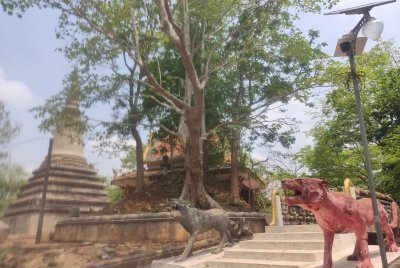
Time of the visit: april the 7th,2025
For 90.000 riel(roughly around 21,5$) a tuktuk driver took me from Cambodia's capital Pnom Penh to Oudong's temple mountain.The journey took about an hour. The driver stopped right next to the tourist information office, where I got a map of all the temples. A few meters away are the stairs leading up to the temple complex. The driver was willing to wait three hours. By the time I reached the top of the stairs, my shirt was soaked with sweat from the high temperatures.Once at the top, you follow a path that goes slightly up and down and leads past various temples to the temple of Vihear Preah Ath Roes, from where it goes back down to the market, which is enormous but only partially used during the week, but suggests that it must be very busy with visitors from the capital at the weekends.
I also visited the quite big and nice Uddom pagoda complex next to the market.All in all I needed around 2h (including a coffee in the market) for that entire area.Since I was faster than I had thought before I ordered the driver to go to Oudong city itself in order to visit the former residence of the king when Oudong used to be the capital of Cambodia.That area is now a big Buddhist complex with many new pagodas.The driver had been to Oudong's famous mountain complex many times, but the old royal compound was a …
Keep reading 0 comments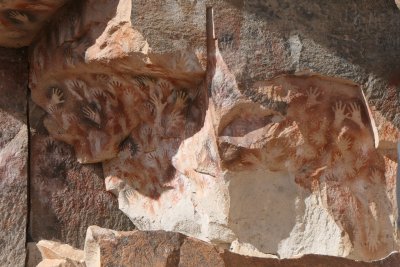
To add another (practical) perspective to J_neveryes’ recent review: we also visited Cueva de las Manos in March 2025, but from the Northwest.
We had some trouble fitting in Cueva de las Manos in our Chile and Argentina trip and in the end the best solution was to fly from Santiago to Balmaceda (in Chile, on the border with Argentina) and drive to Cueva de las Manos by rental car. The flight to Balmaceda landed in the morning, but taking into account some potential uncertainties (time needed to cross the border?, would the flight be on time?, …) we decided to drive to the Perito Moreno area on day 1 and visit Cueva de las Manos on day 2.
The border crossing was fairly quick (the Chilean and Argentine officials are in the same building), but once in Argentina there is about 100 km of average road (40-60 km/u) to be driven before a tarmac road is reached. We stayed in the beautifully located but more expensive than average Posta de Los Toldos (approx. 45 minutes south of Perito Moreno), where we also had a good dinner. On day 2 we took the road from Posta de Los Toldos to Cueva de las Manos (route 1 on the map following the link in Els’ review). Coming from the north / Perito Moreno, this is probably the shortest and fastest option, and it’s also a decent gravel road which can be driven in a standard car (e.g. there was …
Keep reading 0 commentsJakob Frenzel
Brâncusi Monumental Ensemble of Târgu Jiu
Brâncusi Monumental Ensemble of Târgu Jiu (Inscribed)
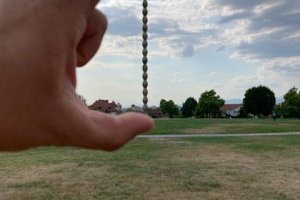
August 2024 - On our way from southern Romania back to Hungary we still wanted to make a stop at this freshly inscribed WHS. It was the so far hottest day on the trip. And there was large traffic jam when we approached Targu Jiu.
So not the best visiting conditions. Additionaly, when we passed the column, there was no spot to park or even halt for a short moment. So only I jumped out, took some humoristic photos and we continued to find a public swimming Pool. It wasn't that easy but we succeeded and spent the night on its parking lot.
The next morning before resuming our trip to Timishoara, I complained that this few minute stop at the column was no legit visit of a WHS. But again finding a parking lot was unfeasible. On the south border of the Brancusi Park my wife pulled over and me and my daughter took again the opportunity to visit the other components.
So really just a tick-off instead of a noteworthy WHS visit, but I wonder whether more visiting time would lead to a higher appreciation of this rather unspectacular WHS.
Keep reading 0 comments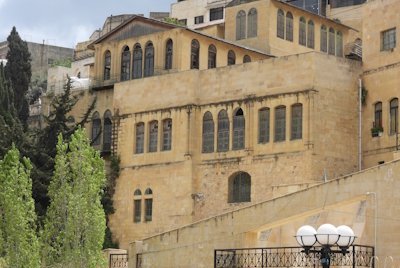
I hadn’t planned on writing a review for this one, but I feel the need to step up for As-Salt a bit, as the current reviews are too harsh. I even believe that people posted gloomy pictures of the site on purpose! I often measure how I like a site by the number of photos I take – there were 101 here, even on a cloudy day and a Friday when many things are closed.
Sure, its OUV is debatable and the overhanging electrical wires and white water tanks have eluded the city’s beautification committee. But do we want the real world to be turned into folk villages? What I found in As-Salt is a homogenous cityscape, built against a hill and made of a distinct yellow, almost golden limestone. Many more original buildings from the late Ottoman period, when As-Salt saw its heydays, have been preserved than I had expected.
In addition to the marked spots by the tourism bureau, I liked the neighbourhood stretching east towards St. George’s Orthodox Church. It takes a bit of climbing but you will be rewarded with good views and some well-preserved traditional buildings. The area has good murals as well, including one that could go for a WH Plaque. Other good spots are the Assumption of Our Lady Catholic Church and the recently renovated residential complexes at Al Ain Square (pictured).
Logistics: I visited around lunchtime on a Friday. There’s little public transport in Amman on Friday mornings, so …
Keep reading 0 comments
Visit date(s): September 29, 30, October 1, 2024
Nearby sites on trip: We were in Shiretoko several days earlier.
Overnight locations: Eniwa, Rusutsu, Hakodate
Location(s): Some locations were accessible but unstaffed when we visited, so we did not visit all of the associated museums.
- Kiusu Earthwork Burial Circles (visited small site center, Chitose City Buried Cultural Properties Center, a few kilometres away, is closed most Sundays)
- Kitakogane (Kitakogane Site Information Center closed at 17:00) (photo of shell mound)
- Takasago Burial and Irie (visited the excellent Irie Takasago Museum between the sites)
- Ofune (visited small site center)
- Kakinoshima (Hakodate Jomon Culture Center closed at 17:00)
Travel method(s): car, foot
Travel duration: We visited the sites as we drove around Hokkaido, staying in different places as we moved around the island.
Visit duration: 1-2 hours per site
OUV: Even visiting only the Hokkaido sites gives an opportunity to see the development of sedentary communities over a span of 5000 years, in coastal and hilltop locations. Each settlement location is close to the coast, so that the bones of many sea dwelling animals were found, while being inland and high enough to offer some protection from flooding, built with grave and midden space nearby. Later sites had ritual and burial areas isolated from residences. There are many more sites in the region that were not included in the designation, so it is also possible to see Jomon artefacts in …
Keep reading 0 comments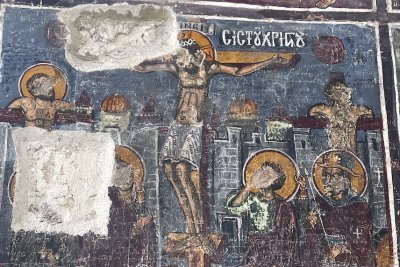
I visited Sümela Monastery in fall 2024. It is possible to reach it via tour from Trabzon, although you can also drive yourself, if you prefer. The walk inside involves a lot of steep stairs up and down -- keep that in mind when choosing your shoes! You can also explore a lot of the rooms, which involves ducking and squeezing into various corners of the monastery. Unfortunately, a lot of the wall art is vandalized and you can find a lot of graffiti where ever you go on the site. There are not any plaques explaining what you see in depth, only some sparse signs that say what each room would have been used for. However, I think with the addition of signs that explain the historical context, the site would be greatly improved. The price for foreigners is steep. I remember paying around $20!
Keep reading 0 commentsJakob Frenzel
Princely religious foundations Wallachia, Moldavia
Princely religious foundations Wallachia, Moldavia (On tentative list)
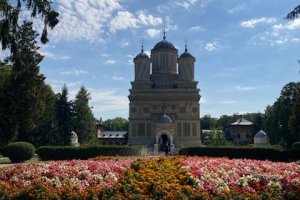
August 2024 - We were told to drive to the Transfăgărășan Highway to have guaranteed bear spotting. So we did and drove up to Lacul Vidraru. On the way we saw 5 bears positioned right at the roads shoulder begging for food. We spent the night at a parking lot and spotted a few bears that night. A bit crazy, but also a longlasting memory.
The next morning we drove back south again and arrived quickly in Curtea de Arges to visit the monastery. The outside is astonishing with its candy like columns, the inside however looks way older and typical for romanian orthodox paintings.
We spent about 20 min here and still visited the older Prince Church of St. Nicholas further south which is also worth the stop.
All in all, the TWHS is situated between Transfăgărășan and Horezu, thus on a pearl string of highlites in southern Romania.
Keep reading 0 comments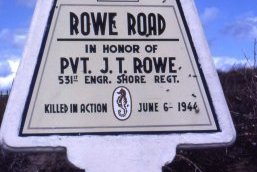
Les Plages du Débarquement, Normandie, 1944, are better known in English as the D Day Landing Beaches in Normandy.The five beaches that make up the D Day landings are (from west to east) Utah, Omaha, Gold, Juno and Sword and they stretch along the Normandy coast from Isigny-sur-Mer in the west to Ouistreham in the east, spanning a total distance of 75 kilometers.It is possible to visit the most prominent sights in a single day with the use of a car. And along the way there plenty of significant things to visit. Every small seaside town and village seems to have a monument to the landings often in the form of a preserved tank or a pillbox. The remains of the floating Mulberry Harbour, an essential temporary harbour to allow ships to dock and unload men and equipment, can still be seen on the beach at Arromanches, defensive pillboxes showing the scars of battle, on the cliffs at Point du Hoc, where US Rangers scaled the cliffs with ropes and grappling hooks to engage the enemy, Pegasus Bridge on the Caen canal, the first building to be liberated on the day prior to the landings, the first Liberty Way marker at KM0, are just a few examples of the fascinating history of the start of the liberation of Europe.There are personal poignant reminders of the human cost too, Rowe Road (pictured), named in honour of Private J T Rowe, just one of the thousands who made the ultimate sacrifice. The …
Keep reading 0 comments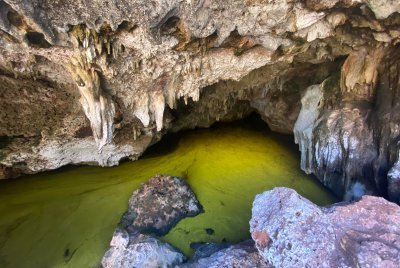
Visited in January 2023.
The national park is listed as a heritage site because of karst terraces and a lot of endemic wildlife, but it’s difficult to see it. Only one trail is available to tourists in the park (El Guafe archeological trail) on the tour from Bayamo, with some nature attractions included, a giant 400-year-old cactus is interesting, but birds fly here in the spring, during the rainy season. Local Indians used the caves for ritual purposes, including for offerings to the “water idol”.For lunch, the guide took us to Cabo Cruz fishing village, where we could eat freshly caught lobsters and fish, and at ridiculous prices.I just think that the Cuba's persistence in promoting this object is primarily due to the fact that a legendary event took place here, the landing of the revolutionary troop led by Fidel Castro on the yacht “Granma”. It was hard to imagine a worse start to the Revolutionary War, the overcrowded boat arrived from Mexico much later than planned, there was a shortage of food and medicine, and after the landing the revolutionary party was crushed by aircraft fire. And yet, a handful of survivors managed to win the war, and Cuba still lives with the consequences of this. And, of course, the guide is happy to show the landing site, the restored fishermen's hut where the revolutionaries hid, and the yacht itself. Perhaps this is the most interesting part of the tour.
Keep reading 0 commentsBoj
Kitanglad and Kalatungan Mountain Ranges
Kitanglad and Kalatungan Mountain Ranges (On tentative list)
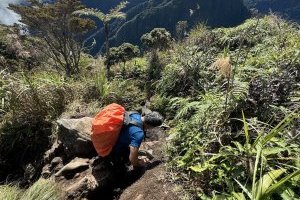
I summitted Mt. Kitanglad in August 2024, after hiking more than 8 hours of steep, muddy, rocky, slippery terrain. It is the fourth highest mountain in the country, and graded 6/9 in terms of trail difficulty.
It is nominated as a mixed site, to recognize the cultural heritage values of the indigenous cultural communities (ICC) living the mountain range. Few wooden altars can be noticed along the trail - a place of prayer for ancestors and mountain spirits; most are hidden from hikers and only the ICCs know where they are.
Before starting the climb, hikers must participate in a traditional ritual facilitated by Talaandig datus. These include offering of native chickens, shots of locally brewed alcohol, blessing, protection from harm and prayer for good weather. Based on anecdotal accounts, the tribe leaders of the Kitanglad and Kalatungan mountains (and hike operators/guides) continue to discuss, maybe negotiate, the execution of these pre-hike rituals, i.e., who must perform them, how fees are equitably shared, which hike trails to open, etc. From an outsider's point of view, these negotiations are minor irritants, but they are actually key to long-term management of the heritage site.
Keep reading 0 comments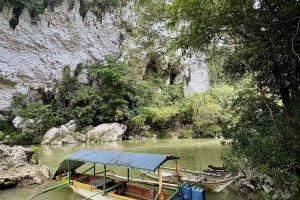
There are four areas comprising this property: (1) Sohoton Natural Bridge National Park, (2) Calbiga Caves Protected Landscape, (3) Jicontol Natural Park; and (4) Taft Forest Philippine Eagle Wildlife Sanctuary. In March 2025, I visited Sohoton Natural Bridge Park, arguably the easiest to visit among the four, given its proximity (only an hour or so) from Tacloban City, a major urban area of the Eastern Visayas region.
Several studies already prove Samar Island Natural Park's biodiversity and geoheritage values. Instead I will commend the positive impact of engaging local communities (especially those living within the park), i.e., members of the cooperative serve as tour guides, entertainers, food caterers, kayak and boat drivers, etc. They are on the right direction towards sustainable development through community-based heritage management.
Keep reading 0 comments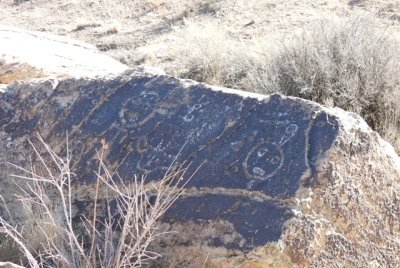
Visit date(s): February 5, 2025
Nearby sites on trip: Grand Canyon
Overnight locations: Flagstaff and Winslow. For people interested in the architecture of Mary Colter, there is a beautifully restored railway hotel in Winslow. It was a highlight of our week in Arizona.
Location(s):
- Visitor Centers
- Giant Logs and Puerco Pueblo trails. (photo of petroglyphs at Puerco Pueblo)
- Almost all overlooks
- Blue Mesa drive
- Painted Desert Inn National Historic Landmark
Travel method(s): car
Travel duration: 1-2 hours between overnight locations and the park
Visit duration: half day
OUV: The abundance of petrified wood and other fossils provides information about the late Triassic period. Aside from the fossils, there are pueblo sites, petroglyph’s and the remains of more recent human activity. Maybe these remnants of other cultures are not as uniquely significant as in other locations, but they do show that people have been interacting with the fossils for a long time.
Best of: Getting up close and personal with the giant logs. They are extremely colourful up close. The painted desert views are also spectacular.
Worst of: Very open and exposed landscape that would be blisteringly hot in the summer.
Keep reading 0 comments